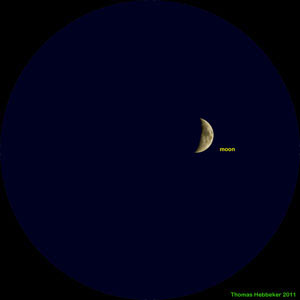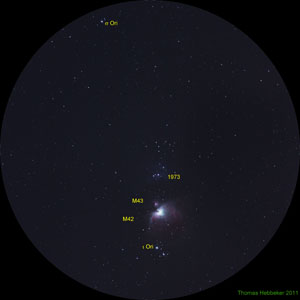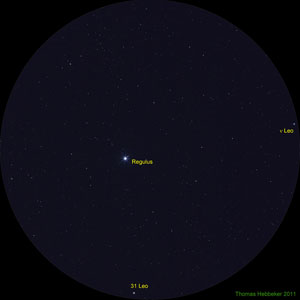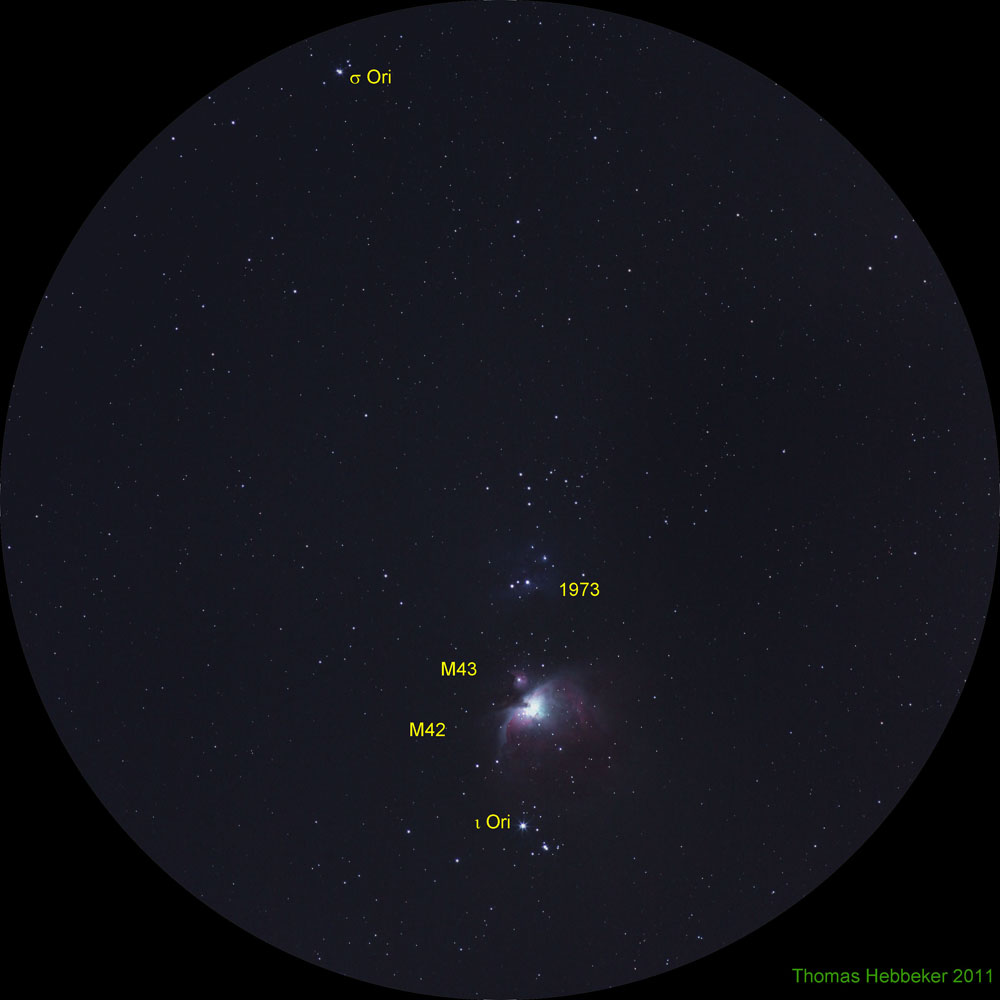The sky seen through binoculars
with a field of view of 4.8 degrees these photos try to show
what one can see through binoculars
Thomas Hebbeker 2011
Photos:
-
 Moon
Moon
-
 Orion: M42
Orion: M42
-
 Leo: Regulus
Leo: Regulus
Annotations:
- All photos were made by Thomas Hebbeker. Copyright: Thomas Hebbeker.
- Pictures were taken from Neu-Moresnet in Belgium (50 deg north, 6 deg east),
near the town of Aachen in Germany.
- Equipment: Canon 500D plus IDAS LPS P2 light pollution filter plus Canon 200mm 2.8 L II
on Meade LXD75 with 6" Newton, used for guiding.
- Exposure time in general 4 minutes, sensitivity iso 200 or iso 400, f/D = 4. Shorter exposure for moon etc.
- Photos shown cover a field of view of about 4.8 degrees.
- Orientation: top = North, left = East.
- The left and right photos are identical, the only difference is the legend which
was added to the right picture.
- Photos have been processed. Background color was set to dark blue.
Background information:
Many astronomy books, journals, manuals and web pages who recommend the use of binoculars
to explore the sky,
show unrealistic pictures of the celestial objects.
Often the magnification is exaggerated or very faint objects are presented.
I try to show what one can really see.
Of course, there are different binoculars (7x30 ... 10x80) and the sky quality
and the sensitivity of the observer's eye vary, so my photos can not
exactly reproduce what is seen through binoculars.
Nevertheless I tried to approximate three essential parameters as much as possible:
My photos have these properties:
-
A field of view of 4.8 degrees.
- The faintest star has a magnitude of about 12.
- The angular resolution is of the order of 10'' (1 Pixel = 5'').
For binoculars:
- The field of view varies between 3 and 7 degrees.
- If an eye with 7 mm pupil can see stars of magnitude 6,
a 80 mm binocular opening gives a factor of (80/7)**2 = 130
in light intensity, thus a gain of about 5 magnitudes. Therefore the
faintest star has magnitude 11.
- The angular resolution of a sharp eye is of the order of 100''.
A magnification by a factor of 10 improves this to 10''.
So the parameters of the binocular view and of my photos are indeed similar.
Note that `small' binoculars will reveal less detail and can not show the
fainter of the deep sky objects displayed in the photos.
With the same scale and about the same light sensitvity in all photos
(with exceptions as moon, planets)
it is easy to compare different celestial objects.
Links:
Responsible for the content of this page is Thomas Hebbeker. Last modified March 12, 2011.


 Moon
Moon
 Orion: M42
Orion: M42
 Leo: Regulus
Leo: Regulus